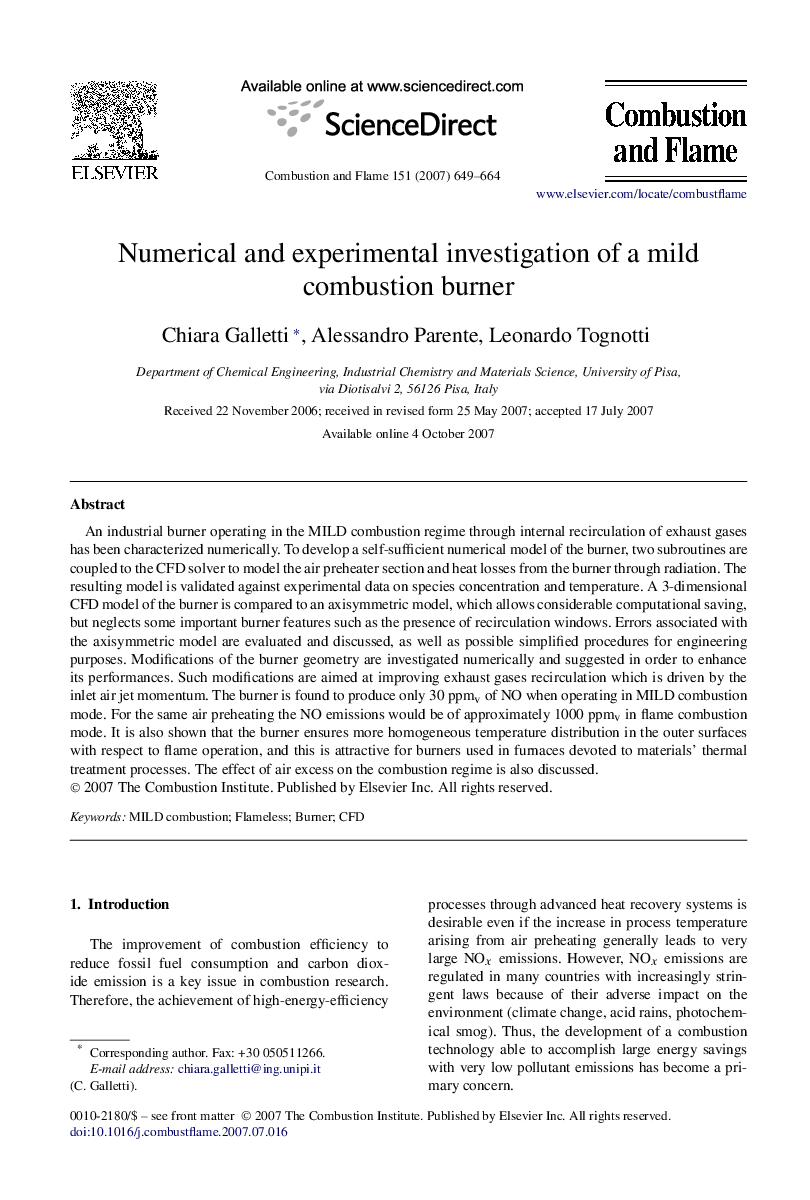| Article ID | Journal | Published Year | Pages | File Type |
|---|---|---|---|---|
| 170055 | Combustion and Flame | 2007 | 16 Pages |
An industrial burner operating in the MILD combustion regime through internal recirculation of exhaust gases has been characterized numerically. To develop a self-sufficient numerical model of the burner, two subroutines are coupled to the CFD solver to model the air preheater section and heat losses from the burner through radiation. The resulting model is validated against experimental data on species concentration and temperature. A 3-dimensional CFD model of the burner is compared to an axisymmetric model, which allows considerable computational saving, but neglects some important burner features such as the presence of recirculation windows. Errors associated with the axisymmetric model are evaluated and discussed, as well as possible simplified procedures for engineering purposes. Modifications of the burner geometry are investigated numerically and suggested in order to enhance its performances. Such modifications are aimed at improving exhaust gases recirculation which is driven by the inlet air jet momentum. The burner is found to produce only 30 ppmv of NO when operating in MILD combustion mode. For the same air preheating the NO emissions would be of approximately 1000 ppmv in flame combustion mode. It is also shown that the burner ensures more homogeneous temperature distribution in the outer surfaces with respect to flame operation, and this is attractive for burners used in furnaces devoted to materials' thermal treatment processes. The effect of air excess on the combustion regime is also discussed.
